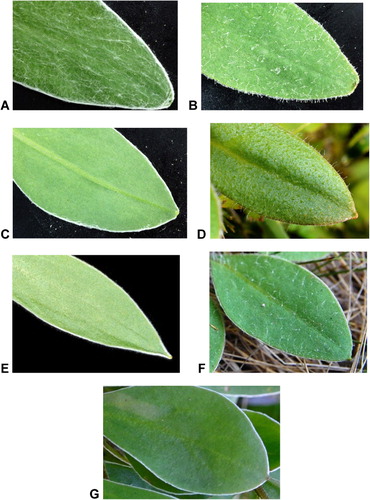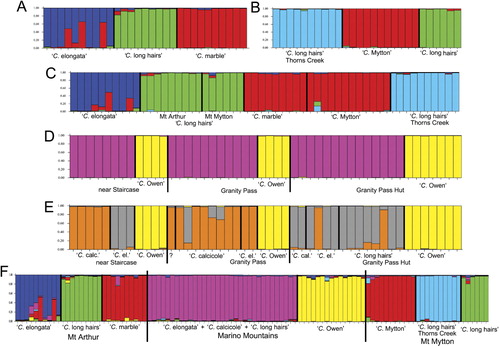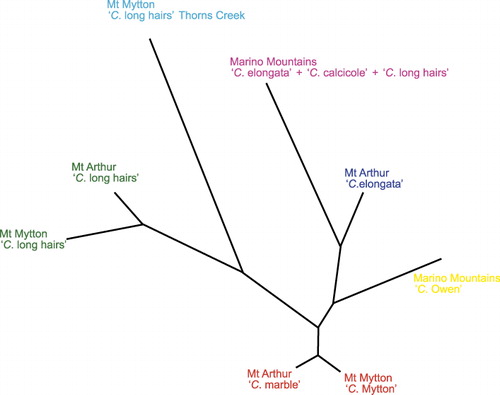Figures & data
Table 1 Localities and putative informally named Craspedia species.

Table 2 Details of the simple sequence repeat markers characterised in this study.
Table 3 Summary statistics for SSR markers characterised in this study.
Table 4 Values of K (the number of populations) for each structure analysis undertaken as indicated by comparison of ΔK and mean lnPr(X|K).



